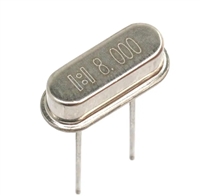Integrator Series FPGAs: 1200XL and 3200DX Families
programming algorithms. The structure is highly testable
because there are no pre-existing connections; therefore,
temporary connections can be made using pass transistors.
These temporary connections can isolate individual
CLKB
CLKA
CLKINB
CLKINA
antifuses to be programmed and individual circuit
structures to be tested, which can be done before and after
programming. For example, all metal tracks can be tested
for continuity and shorts between adjacent tracks, and the
functionality of all logic modules can be verified.
From
Pads
S0
S1
Internal
Signal
CLKMOD
CLKO(17)
CLKO(16)
CLKO(15)
Clock
Drivers
Clock Networks
Two low-skew, high-fanout clock distribution networks are
provided in each 3200DX device. These networks are
referred to as CLK0 and CLK1. Each network has a clock
module (CLKMOD) that selects the source of the clock
signal and may be driven as follows:
CLKO(2)
CLKO(1)
1. Externally from the CLKA pad
2. Externally from the CLKB pad
3. Internally from the CLKINA input
4. Internally from the CLKINB input
Clock Tracks
The clock modules are located in the top row of I/O
modules. Clock drivers and a dedicated horizontal clock
track are located in each horizontal routing channel.
Figure 7 • Clock Networks
IEEE Standard 1149.1 Boundary Scan Testing (BST)
The user controls the clock module by selecting one of two
clock macros from the macro library. The macro CLKBUF is
used to connect one of the two external clock pins to a clock
network, and the macro CLKINT is used to connect an
internally-generated clock signal to a clock network. Since
both clock networks are identical, the user does not care
whether CLK0 or CLK1 is being used. The clock input pads
may also be used as normal I/Os, bypassing the clock
networks (see Figure 7).
IEEE Standard 1149.1 defines a four-pin Test Access Port
(TAP) interface for testing integrated circuits in a system.
The 3200DX family provides five BST pins: Test Data In
(TDI), Test Data Out (TDO), Test Clock (TCK), and Test
Mode Select Test Reset (TRST) (3200DX24A only). Devices
are configured in a test “chain” where BST data can be
transmitted serially between devices via TDO-to-TDI
interconnections. The TMS and TCK signals are shared
among all devices in the test chain so that all components
operate in the same state.
The 3200DX devices which contain SRAM modules (all
except A3265DX and A32140DX) have four additional
register control resources, called quadrant clock networks
(Figure 8 on page 10). Each quadrant clock provides a local,
high-fanout resource to the contiguous logic modules within
its quadrant of the device. Quadrant clock signals can
originate from specific I/O pins or from the internal array
and can be used as a secondary register clock, register
clear, or output enable.
The 3200DX family implements a subset of the IEEE
Standard 1149.1 BST instruction in addition to a private
instruction, which allows the use of Actel’s ActionProbe
facility with BST. Refer to the IEEE Standard 1149.1
specification for detailed information regarding BST.
Boundary Scan Circuitry
The 3200DX boundary scan circuitry consists of a Test
Access Port (TAP) controller, test instruction register, a
JPROBE register, a bypass register, and a boundary scan
register. Figure 9 on page 10 shows a block diagram of the
3200DX boundary scan circuitry.
Test Circuitry
All devices contain Actel’s ActionProbe test circuitry which
test and debug a design once it is programmed into a device.
Once a device has been programmed, the ActionProbe test
circuitry allows the designer to probe any internal node
during device operation to aid in debugging a design. In
addition, 3200DX devices contain IEEE Standard 1149.1
boundary scan test circuitry.
When a device is operating in BST mode, four I/O pins are
used for the TDI, TDO, TMS, and TCK signals. An active
reset (nTRST) pin is not supported; however, the 3200DX
device contain power-on circuitry that resets the boundary
scan circuitry upon power-up. Table 1 on page 11
summarizes the functions of the IEEE 1149.1 BST signals.
Discontinued – v3.0
9






 资料手册解读:UC3842参数和管脚说明
资料手册解读:UC3842参数和管脚说明

 一文带你了解无源晶振的负载电容为何要加两颗谐振电容CL1和CL2
一文带你了解无源晶振的负载电容为何要加两颗谐振电容CL1和CL2

 玻璃管保险丝与陶瓷管保险丝:区别与替代性探讨
玻璃管保险丝与陶瓷管保险丝:区别与替代性探讨

 PCF8574资料解读:主要参数分析、引脚说明
PCF8574资料解读:主要参数分析、引脚说明
